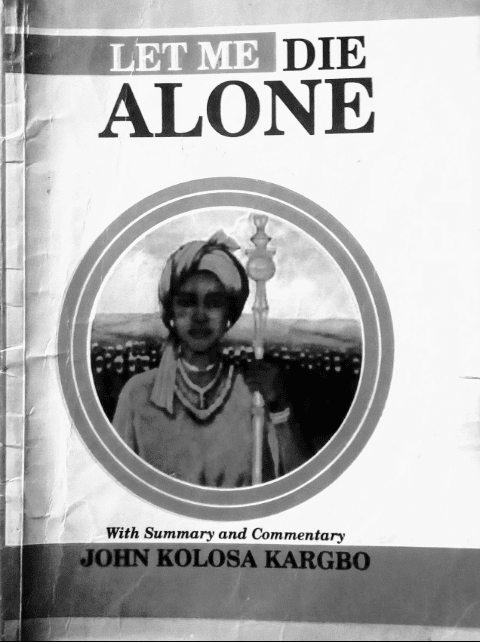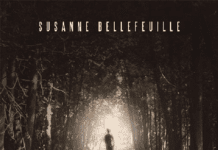Discuss the theme of death in Emily Brontë’s Wuthering Heights
The question of death in Emily Brontë’s Wuthering Heights underpins the tragedy that follows the relationship, and the retribution of the two case families, Earnshaw and Linton, and Heathcliff respectively. Tragedy in the narrative is a deep-seated fate attributed to the “limitation of the human spirit” (Wole Soyinka). By that token, the reader is made to see how death is pivotal to the shrouded possibility by which man, the victim, can ever be reconciled to his destiny thwarted by revenge.
The multiple deaths in the novel is another means by which time judges a superfluous existence. It is justified by how it settles the physical and psychological scourge of love and hate as the case may be for the characters. As will be examined in subsequent paragraphs, death in the novel is an effective means of resolving the pains of man’s own error which holds some twin nature with his choice.
The genesis of tragic goings on in the narrative is the death of the family patriarchs, Earnshaw and Linton. What Emily Brontë does here strikes a resemblance with William Golding’s Lord of the Flies whereby the absence of an elder drives the young leaders into turpitude. It is the same as Hindley Earnshaw’s heated malevolence towards Heathcliff. This sceneries underlie one situation of the world: when human affairs are left in the hands of those who lack the acumen to foster an unbroken bond of humaneness, the immediate world shares in the suffering that follows. It is evident in the World Wars that tore Europe apart; and the Civil War that broke out in Nigeria; and that which we have had in Liberia, etc. Apart from this, in any situation where the course of the affair is at the mercy of green individuals in any wise, an unprecedented decline in the sanity of that world creeps in. The death of the two patriarchs is a microcosm of what obtains in the human world where in the absence of any sanctioning authority, man abuses his position of privilege to the end that he stings his fellow and himself with the thoughtlessness of that decadence.
Catherine’s and Isabella’s deaths project the self-ruin that follows the women’s queer choices. Because Catherine cannot forgive herself, and live in the physical world free of the scathing feeling of Heathcliff’s absence, she loses hold; becomes eccentric and dies at childbirth. The symbolism of her death is the exit from pain, and the continuity of the trauma that the child’s birth may further hold for her. Similarly, Isabella dies where she has gone to live away from Wuthering Heights and Thrushcross Grange, having been divested of companionship in the palpable world, and intractably traumatised by unrequited love. Both their deaths are concrete representations of victimised emotions. While Isabella’s abusive marriage shatters her essence, Catherine’s conditioned marriage does the undoing.
It is in this light that Linton, Heathcliff and Isabelle’s son, dies. His death is the consequence of a life running with the bile of a father who is gratified from tormenting his mother and hating the child — even though he is terribly sickly. What this projects is a sick world, loveless, galled, and toxic given the circumstance of conflicts and rivalry razing the society to fine powder of humanity. Further, Frances’ death counts for the abrupt distortion of the course of life in an environment that portends gloom and degeneration. Although she is not one of the major characters we associate with the repercussions of the feud, she simply represents the escapist indulgence of helpless sufferers. Her leaving Hareton to the toxic world casts a shadow of existential struggles for the innocent child right from his birth. The same for Catherine and her daughter, Cathy. Frances represents the first leavers of the space set in motion for unsolicited hostility.
Lastly, Heathcliff’s death is the naked fact of his two-ended retribution on the Earnshaws and the Lintons. In fact, his death is a justification of Nelly Dean’s submission thus: “… treachery and violence are spears pointed at both ends; they wound those who resort to them than their enemies.” The narrative is set in motion for feud. Heathcliff and Hindley become confrontational and the former is the “fiend” to whose existence the latter is bent on bringing an end in a bid to “to do” Nelly Dean “kindness…and Hareton justice.” Hindley proceeds to ferociously attack Heathcliff: the latter dodging the knife, leaves his attacker mortally wounded. The irony of that attack also buttresses the maxims of self-destruction from the inordinate drive to revenge. Such is the venom of the unforgiving spirit! Hindley eventually dies from the wound sustained; and Heathcliff dies from a psycho-mental wound of Catherine’s death, in the long run. Past recasting the turn of events, malice, bitterness, malevolence, and turpitude fomented on fellow human in respect of unbidden enmity, it is suggested, are the intractable wounds from which the wielder eventually dies, — even more painfully — having a pernicious, harrowing effect on the body, mind, and soul.
To this end, the tragic atmosphere that encapsulates the bland love shared between Heathcliff and Catherine in the narrative counts for the criticism of a polarised world. The story takes a cursory look into the poisonous consequence of adulterated love. It is an adventurist exposition on a solitary world itself the aftermath of paranoia, hate, and vengeance. Death therefore had both physical and spiritual manifestations in the novel throughout the scenes voyaging the subject matter.
 WHATSAPP: Click HERE to join the new Literature PADI WhatsApp group to receive latest updates on your phone and for further literary discussions!
WHATSAPP: Click HERE to join the new Literature PADI WhatsApp group to receive latest updates on your phone and for further literary discussions!







